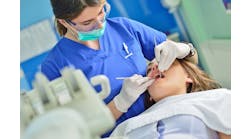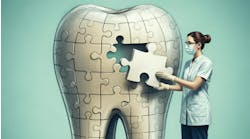by Gordon J. Christensen, DDS, MSD, PhD
In this monthly feature, Dr. Gordon Christensen addresses the most frequently asked questions from Dental Economics readers. If you would like to submit a question to Dr. Christensen, please send an email to [email protected]
Question ...
What would you describe as an optimal managed care program for dentistry?
Answer from Dr. Christensen ...
Several years have passed since the original dental managed care programs were challenged by the current PPOs and HMOs. Many young dentists do not know about the original indemnity programs, which were good for both patients and dentists. In these programs, the administrators of the company for which the patient worked negotiated with the managed care company, and a plan was devised that provided certain benefits for the patient. The patient paid the dentist the difference between the amount the company had contracted to pay and the amount the dentist charged, and everybody was satisfied. There was little or no control of dental fees by third-party payers, or coercion from them about what therapy the dentist could accomplish. This type of indemnity plan worked well, and it is still a prototype for an adequate managed care program.
In recent years, third-party payment companies offering indemnity programs have exerted a greater influence over patients, the treatment they can receive, and the fees dentists can charge. As a result, many indemnity plans are less attractive to both patients and dentists. Nevertheless, they are still more acceptable than PPOs or HMOs, which control patient choices of treatment, dentist treatment plans, and dental fees.
In my opinion and considerable experience, dental HMOs do not have a legitimate place in the dental marketplace, and patients and dentists should be discouraged from participating in them. The recent recorded decline in enrollment in such plans testifies to the validity of my belief.
Dental PPOs are continuing to grow, and predications show the potential for their continued growth. In my opinion, maintaining high treatment quality in a typical PPO practice situation is difficult. Dentists must reduce costs, buy less expensive supplies and equipment, and work faster than normal to generate sufficient revenue to financially survive in the typical 20 percent fee-reduction PPO.
Direct reimbursement and direct assignment are my choices for providing the best value for the patient while still preserving high quality patient care. It is well known that almost all of the money an employer puts into dental benefits in a direct reimbursement or direct assignment program goes to the patient, and not to the third-party company and its owners.
In summary, my choices for the best type of managed care for dentistry are indemnity programs and direct reimbursement or direct assignment programs. Personally, I strongly reject dental HMOs and will not participate in PPOs. I prefer that employer money for dental benefits goes to the patients and not to third-party companies.
One of our recent Practical Clinical Courses videos has been shown to increase practice productivity significantly — V-4791 — Faster, Easier, Higher Quality Dentistry. Call PCC at (800) 223-6569.
Question ...
When should the owners of a dental office consider opening their own dental laboratory? Do you save money by having your own lab?
Answer from Dr. Christensen ...
Most dentists in the United States use off-site laboratories. However, in some countries, such as in Western Europe, in-house labs are very common.
For about one-half of my career, I did not have an on-site laboratory. During the latter half of my career, I have had both fixed and removable technicians on-site. Although some dentists do not have a choice in this decision, I would not consider returning to a remote laboratory concept.
Some of the advantages of an in-house lab are as follows:
- The technician has input into the diagnosis and treatment planning of specific cases
- Shade selection problems are over; the shade becomes the challenge of the technician
- If any aspect of the laboratory procedure is not satisfactory, the technician learns from experience, thereby avoiding it in the future
- Problems with any aspect of the laboratory work often can be corrected by the laboratory technician without needing to schedule a second patient appointment.
It has been estimated that the typical American dentist places about 25 units of crowns or fixed prostheses per month. Unless another practitioner shares the lab, the typical dentist cannot afford the lab alone. When the crown production approaches 40 or 50 units per month, an in-house technician can be financially justified. Usually, a removable prosthodontics lab would also need to be shared. It would be an uncommon dental practice that produces enough removable prosthodontics to support an in-house lab alone.
You save money with an in-house lab. It is not saved because the laboratory work is less expensive; it is saved because changes in any laboratory project often can be made while the patient is still in the office, and many laboratory errors are avoided since the technician is present in the office. The resulting financial savings is significant.
Although many dentists have established effective relationships with labs distant from their offices, I strongly prefer the in-house laboratory concept. However, I am a prosthodontist, and my office produces significant quantities of prosthodontic therapy when in full operation.
Information on my concepts and techniques in fixed and removable prosthodontics are available in many Practical Clinical Courses videos. A recent well-received one is V-1990 Multiple Unit Fixed Prosthodontics - 2nd Edition. Call PCC at (800) 223-6569.
Dr. Christensen is a practicing prosthodontist in Provo, Utah. He is the founder and director of Practical Clinical Courses, an international continuing-education organization for dental professionals initiated in 1981. Dr. Christensen is a co-founder (with his wife, Rella) and senior consultant of Clinical Research Associates, which, since 1976, has conducted research in all areas of dentistry and publishes its findings to the dental profession in the well-known CRA Newsletter. He is an adjunct professor at Brigham Young University and the University of Utah. Dr. Christensen has educational videos and hands-on courses on the above topics available through Practical Clinical Courses. Call (800) 223-6569 or (801) 226-6569.
Dr. Christensen's views do not necessarily reflect the opinions of the editorial staff at Dental Economics.





